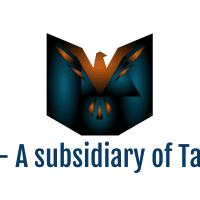Opinion
By David Orsmond, Mauricio Brown and Ali Amrollahi
COVID-19 has changed the face of Australia’s workforce.
While ads for jobs in industries such as communications, real estate and educational services declined last year, the demand for work in online retail, in the retail supply chain, in logistics, and in construction has grown significantly. The demand for professional roles? That’s up, too.
Researchers at Macquarie University are analysing job advertisement data collected by market intelligence leader LinkUp to identify employment trends and in-demand job skills.

Demand for work in online retail, in the retail supply chain, in logistics, and in construction has grown.Credit: Wolter Peeters
While jobs ads in industry sectors such as accommodation and hospitality are still struggling to recover to their levels before the pandemic, surprising trends include the growth in job areas such as public administration and in professional, scientific and technical services.
LinkUp’s real-time data are sourced daily from more than 250 million job listings representing 60,000 companies in 195 countries. Some 2.2 million of those advertised jobs are from Australia. In the Macquarie University analysis, last year the top 20 employers posted almost 50 per cent of the job ads in Australia.
Associate Professor Mauricio Marrone from Macquarie’s Department of Actuarial Studies and Business Analytics (ASBA) says the job vacancy data his research team accessed (with more than half a million records in Australia since 2019) cover a range of large, medium and small companies and public agencies across all industries.
“The data provide a spotlight on which companies are hiring today, what types of skills they are seeking, and how these trends are changing through time,” he says.
Dr Ali Amrollahi, a lecturer in the department says the team is especially excited to track the hiring of new skills into the economy. “Not just new technologies like artificial intelligence and so on, but what data analytics and visualisation skills companies are seeking in their new hires, what education credentials and experience they are seeking. And the crossover of interdisciplinary knowledge in the new economy”.
“Those insights can help Macquarie University and other education providers ensure we are providing up-to-date knowledge, skills and capabilities for students’ emerging careers.”
Job advertisements captured in the LinkUp data grew strongly in 2022. Much of the 11 per cent growth last year was led by hiring in the state governments of NSW, WA and Queensland.
Jobseekers were also likely to be rewarded if applying to mining, finance and retail companies, reflecting the strong outlook for the commodity sector globally, a rise in home lending, and pent-up demand for retail goods after the reopening of the Australian economy.
Setting aside the state governments, the information and technology industry saw a relatively slow pace of jobs growth in 2022 despite advances in technologies and demand for their associated skills.
The top 20 employers (averaging around 3000 job advertisements a year each) dominated the hiring process, with 35 per cent of all job advertisements outside state governments.
Notable companies in this group are the mining giants Glencore and Rio Tinto, Coles and Woolworths, and the top five commercial banks (CBA, Westpac, NAB, ANZ and Macquarie). The retail chains Harvey Norman and Just Group were also notable job advertisers.
In line with the re-opening of the economy, food, accommodation and hospitality providers such as Compass Group, Accor and Marriott Group were also significant job advertisers last year.
Loading
Hiring was strong in the retail industry; the big supermarkets Coles and Woolworths represented around half of the jobs advertised in that industry, with mid-range-sized stores and internet retail companies most of the balance in line with the re-opening of the economy.
The technology and data-related companies Accenture, Amazon and InfoSystems filled out much of the top list.
“The data for 2022 provide a fascinating indication of how the economy is coming out of the COVID period,” says Professor David Orsmond of Macquarie University’s Department of Economics.
“They show that hiring last year was dominated by the big employers, both at state government and the top private companies. Setting aside hiring by the state governments, 35 per cent of hires were by the top 20 private companies alone compared with only 15 per cent for the next 30 large employers.”
The economy has boomed, says Orsmond, as households have all at the same time tried to make up for consumption that was deferred during the COVID lockdowns, spending some of the $300 billion in excess savings accumulated during that period. Employers across all industries have struggled to hire labour to keep up with this resurgent demand, and, at around 3½ per cent, the unemployment rate is now the lowest in 50 years.
Future research envisages a deep dive into the exact nature of the jobs that specific companies are seeking.
Orsmond says that as the researchers update these new data series, “it will be interesting to see how these trends change as different companies in the economy respond in different ways to the rise in interest rates and the slowing of household demand that is expected during 2023 and beyond”.
Professor David Orsmond, Associate Professor Mauricio Marrone, and Dr Ali Amrollahi are part of a LinkUp/Macquarie Business School collaboration: The New Macquarie University Data Series on Labour Market Trends in a Post-COVID World.
Most Viewed in Business
Loading













